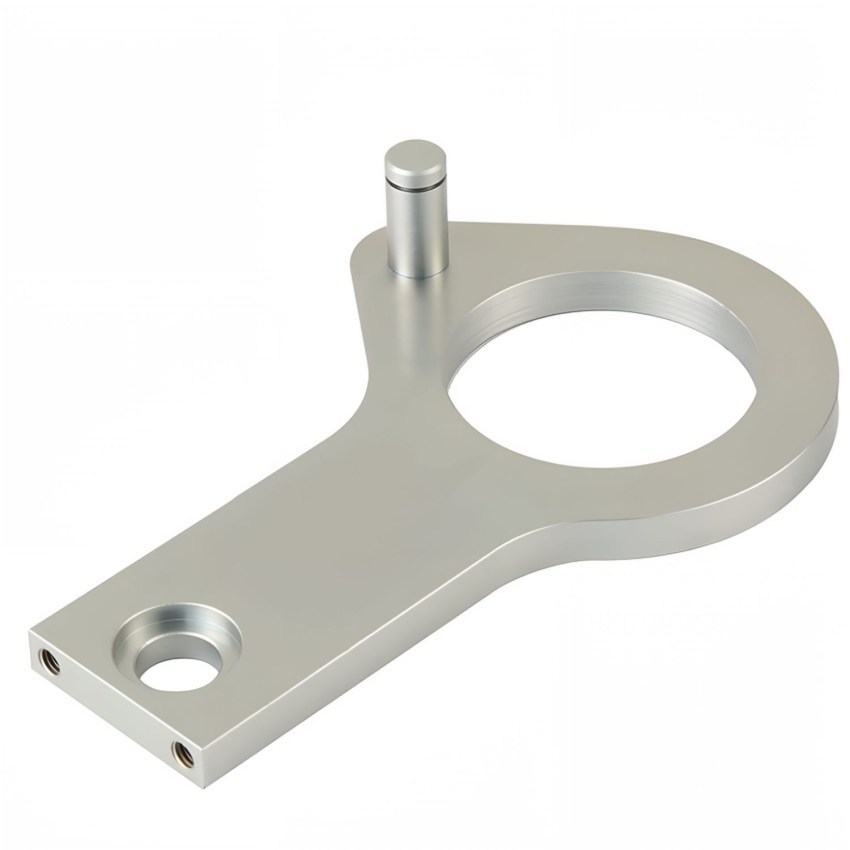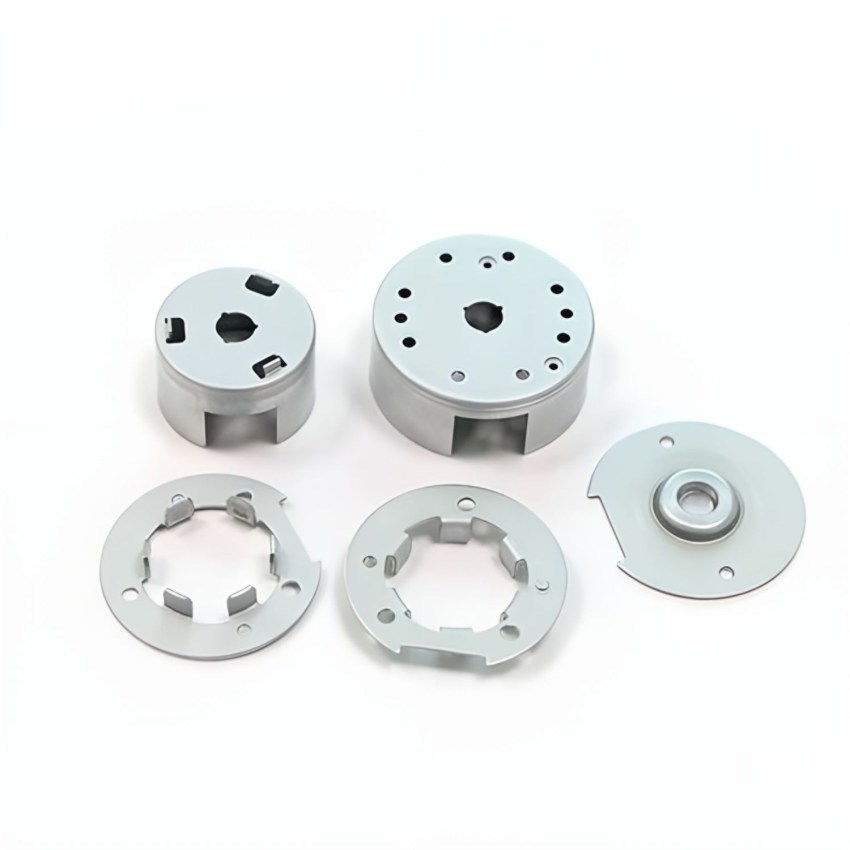Exploring the Benefits of Aerospace CNC Machining in Modern Manufacturing
Release time:
2025-01-26
Exploring the Benefits of Aerospace CNC Machining in Modern Manufacturing Table of Contents 1. Introduction to Aerospace CNC Machining 2. What is CNC Machining? 3. Benefits of CNC Machining in Aerospace Manufacturing 3.1 Precision and Accuracy 3.2 Cost-Effectiveness 3.3 Flexibility and Customization 3.4 Efficiency and Speed

Exploring the Benefits of Aerospace CNC Machining in Modern Manufacturing
Table of Contents
- 1. Introduction to Aerospace CNC Machining
- 2. What is CNC Machining?
- 3. Benefits of CNC Machining in Aerospace Manufacturing
- 3.1 Precision and Accuracy
- 3.2 Cost-Effectiveness
- 3.3 Flexibility and Customization
- 3.4 Efficiency and Speed
- 3.5 Safety and Reliability
- 4. The CNC Machining Process in Aerospace Production
- 5. Applications of CNC Machining in the Aerospace Industry
- 6. The Future of CNC Machining in Aerospace Manufacturing
- 7. Conclusion
- 8. FAQs about Aerospace CNC Machining
1. Introduction to Aerospace CNC Machining
The aerospace industry is characterized by its need for precision and reliability. Components must meet stringent safety and performance standards, which is where **CNC (Computer Numerical Control) machining** comes in. This advanced manufacturing process is instrumental in creating intricate parts used in aircraft, spacecraft, and satellite systems. By automating the machining process, CNC technology allows manufacturers to achieve unparalleled precision and efficiency, vital for the aerospace sector.
2. What is CNC Machining?
CNC machining is a manufacturing process that utilizes computers to control machine tools. This technology can perform various operations, including drilling, milling, turning, and grinding, with high degrees of accuracy. CNC machines interpret a programmed design and translate it into precise movements, resulting in the production of complex geometries and intricate components with minimal human intervention. This automated process enhances productivity, reduces errors, and allows for greater consistency in production.
3. Benefits of CNC Machining in Aerospace Manufacturing
Understanding the specific advantages of CNC machining in the aerospace industry can help manufacturers make informed decisions about their production processes. Below are some of the key benefits:
3.1 Precision and Accuracy
The aerospace industry demands the highest levels of precision. CNC machining enables manufacturers to produce components that adhere to tight tolerances, often within ±0.001 inches. This **high precision** is crucial for parts that must fit together seamlessly and function reliably under extreme conditions. For instance, the intricate components of an aircraft engine must be manufactured with precision to ensure optimal performance and safety.
3.2 Cost-Effectiveness
While the initial investment in CNC machinery can be substantial, the long-term cost savings are significant. Automation reduces labor costs, minimizes material waste, and increases production speed, ultimately leading to a lower cost per part. Additionally, the reduced likelihood of errors and the need for rework further enhance cost-effectiveness, allowing aerospace manufacturers to remain competitive in a challenging market.
3.3 Flexibility and Customization
CNC machining offers unmatched flexibility, enabling manufacturers to produce a wide range of parts in various sizes and shapes. This adaptability is particularly beneficial for the aerospace sector, where customization is often necessary to meet specific customer requirements or to accommodate unique design features. Whether producing a one-off prototype or a large batch of components, CNC technology can be easily adjusted to meet the specific needs of each project.
3.4 Efficiency and Speed
The ability to automate production processes significantly enhances efficiency. CNC machines can operate continuously, producing parts at a rapid pace without sacrificing quality. This increased speed is particularly advantageous in the aerospace sector, where timely delivery of components is essential to maintaining project timelines and meeting customer demands.
3.5 Safety and Reliability
Safety is paramount in the aerospace industry, and the reliability of components is non-negotiable. CNC machining processes are designed to produce parts with consistent quality, reducing the risk of defects that could compromise safety. By ensuring that each component meets stringent regulatory standards, manufacturers can achieve greater confidence in the reliability of their products.
4. The CNC Machining Process in Aerospace Production
The CNC machining process typically involves several key steps:
1. **Design and Engineering**: The process begins with the creation of a 3D model using CAD (Computer-Aided Design) software. This model outlines the specifications and dimensions of the component to be produced.
2. **Programming**: Once the design is finalized, it is converted into a CNC program. This program contains detailed instructions for the machine, specifying the tools to be used, cutting paths, and feed rates.
3. **Setup**: The CNC machine is set up with the appropriate tools and the material to be machined. Proper setup is crucial for achieving the desired precision and accuracy.
4. **Machining**: The CNC machine executes the programmed instructions, performing the necessary operations to create the component. This stage often involves multiple operations, requiring the machine to switch between different tools.
5. **Inspection**: Quality control is an integral part of the CNC machining process. Components are inspected to ensure they meet the required specifications and tolerances.
6. **Finishing**: Once the machining process is complete, additional finishing operations may be performed to enhance the surface quality or to meet specific requirements.
5. Applications of CNC Machining in the Aerospace Industry
CNC machining plays a vital role in various applications within the aerospace industry, such as:
- **Engine Components**: CNC machining is used to produce critical engine parts like turbine blades, combustion chambers, and housings, all of which require high precision and durability.
- **Structural Components**: The manufacturing of airframe components, such as fuselage sections and wing structures, relies heavily on CNC machining to ensure structural integrity and adherence to safety standards.
- **Interior Components**: From cockpit controls to passenger seating, CNC machining allows for the production of customized interior components that enhance passenger experience and safety.
- **Prototype Development**: The ability to quickly produce prototypes makes CNC machining invaluable for testing new designs and concepts before mass production.
6. The Future of CNC Machining in Aerospace Manufacturing
As technology continues to advance, the future of CNC machining in aerospace manufacturing looks promising. Innovations such as **additive manufacturing**, **Industry 4.0**, and **smart machining** systems are set to revolutionize the way components are produced. These advancements will further enhance precision, reduce lead times, and improve sustainability in manufacturing processes. The integration of AI and machine learning will enable predictive maintenance and optimization of machining parameters, leading to even greater efficiency and cost savings.
7. Conclusion
Aerospace CNC machining is a critical component of modern manufacturing, offering a range of benefits that address the unique challenges of the aerospace industry. From unparalleled precision and cost-effectiveness to flexibility and reliability, CNC machining enhances production capabilities while ensuring safety and high-quality outcomes. As we look to the future, the continued evolution of CNC technology promises to further transform aerospace manufacturing, enabling companies to meet the growing demands of the industry while maintaining the highest standards of excellence.
8. FAQs about Aerospace CNC Machining
1. What materials can be used in aerospace CNC machining?
CNC machining can work with a variety of materials, including aluminum, titanium, steel, and composite materials, each chosen for its specific properties and applications within the aerospace sector.
2. How does CNC machining ensure precision in aerospace components?
CNC machines operate based on programmed designs that dictate precise movements, allowing them to produce components with extremely tight tolerances, ensuring that each part meets the required specifications.
3. What is the role of automation in CNC machining?
Automation in CNC machining reduces the need for manual intervention, leading to increased efficiency, reduced labor costs, and a lower risk of human error during the manufacturing process.
4. How long does it take to produce components using CNC machining?
Production time can vary based on the complexity of the component and the machining process required. However, CNC machining typically allows for faster production compared to traditional methods, especially for complex geometries.
5. Can CNC machining be used for both prototyping and mass production?
Yes, CNC machining is versatile and can be used for producing both prototypes and mass-produced components, making it an ideal solution for various manufacturing needs in the aerospace sector.
Key words:




